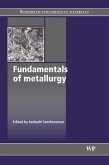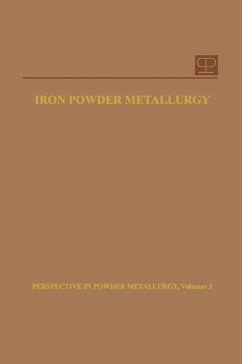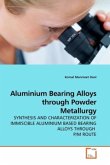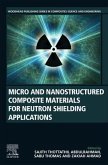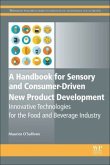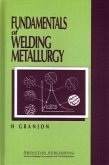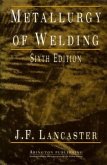Advances in Powder Metallurgy Properties, Processing and Applications
Advances in Powder Metallurgy Properties, Processing and Applications Jetzt bewerten Jetzt bewerten
Powder metallurgy (PM) is a popular metal forming technology used to produce dense and precision components. Different powder and component forming routes can be used to create an end product with specific properties for a particular application or industry. Advances in powder metallurgy explores a range of materials and techniques used for powder metallurgy and the use of this technology across a variety of application areas. …mehr
Andere Kunden interessierten sich auch für
Powder metallurgy (PM) is a popular metal forming technology used to produce dense and precision components. Different powder and component forming routes can be used to create an end product with specific properties for a particular application or industry. Advances in powder metallurgy explores a range of materials and techniques used for powder metallurgy and the use of this technology across a variety of application areas.
Part one discusses the forming and shaping of metal powders and includes chapters on atomisation techniques, electrolysis and plasma synthesis of metallic nanopowders. Part two goes on to highlight specific materials and their properties including advanced powdered steel alloys, porous metals and titanium alloys. Part three reviews the manufacture and densification of PM components and explores joining techniques, process optimisation in powder component manufacturing and non-destructive evaluation of PM parts. Finally, part four focusses on the applications of PM in the automotive industry and the use of PM in the production of cutting tools and biomaterials.
Advances in powder metallurgy is a standard reference for structural engineers and component manufacturers in the metal forming industry, professionals working in industries that use PM components and academics with a research interest in the field.
Produktdetails
Woodhead Publishing Series in Metals and Surface Engineering Verlag: Elsevier Science & Technology / Woodhead Publishing Artikelnr. des Verlages: C2013-0-16243-5 Englisch Abmessung: 233mm x 155mm x 234mm Gewicht: 1060g ISBN-13: 9780857094209 Artikelnr.: 37041592 Die Herstellerinformationen sind derzeit nicht verfügbar.
Woodhead Publishing Series in Metals and Surface Engineering Verlag: Elsevier Science & Technology / Woodhead Publishing Artikelnr. des Verlages: C2013-0-16243-5 Englisch Abmessung: 233mm x 155mm x 234mm Gewicht: 1060g ISBN-13: 9780857094209 Artikelnr.: 37041592 Die Herstellerinformationen sind derzeit nicht verfügbar.
Dr Isaac Chang is Head of Education at the School of Metallurgy and Materials, University of Birmingham, UK.
Contributor contact details
Contributor contact details


